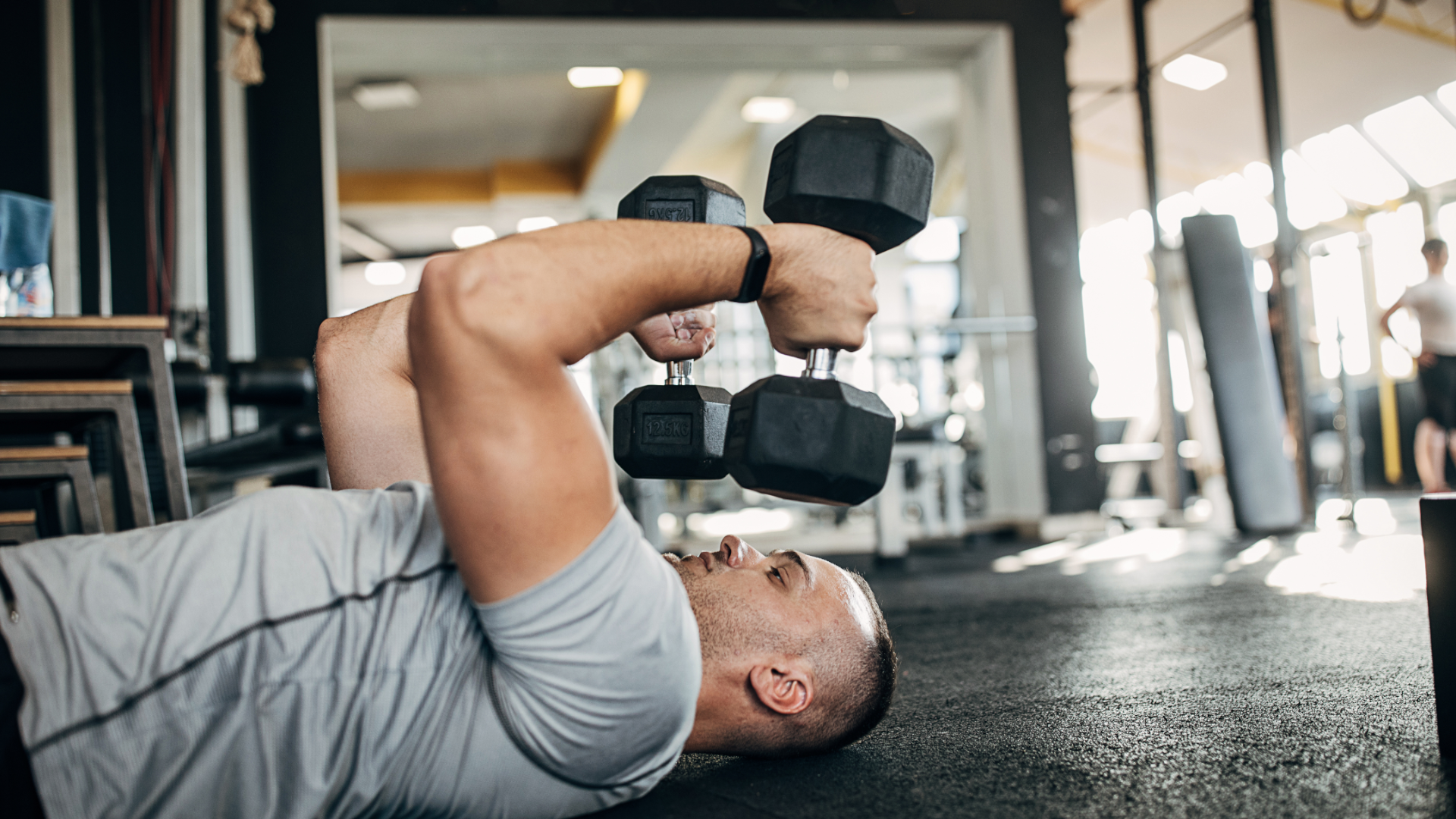

When it comes to strength training, the most logical way to get through your workout is by doing straight sets, which means doing one exercise for a number of reps (a set), followed by a rest period, then another set, and so on.
However, if you’re pushed for training time or want to maximise your hypertrophy gains, you may want to incorporate some supersets in your workout routine.
Supersets aren’t a new style of training, they’ve been used for decades by famous bodybuilders, like Arnold Schwarzenegger, to help build muscle, burn fat and save you valuable time.
Essentially, it’s a great way to help you train smarter, not harder and still see results. Keen to add them to your training? Here’s everything you need to know about them.
What are supersets?
The term might sound quite grand and impressive, but the concept of supersets is very straightforward. A superset is where you perform two sets of exercises back to back, with no rest between them.
Typically, you’ll do the same number of repetitions of each exercise on a superset, although this can differ. For example, you may do 10 dumbbell flies straight into 10 reps of dumbbell lat raises. So, what’s the benefit of training like this? We answer that below.

Benefits of supersets
Firstly, if you’re performing two exercises back to back, the most obvious benefit is that it will reduce your workout time. This is why supersets are an excellent training method for those evenings when you find yourself with limited time on your hands.
Sign up to the T3 newsletter for smarter living straight to your inbox
Get all the latest news, reviews, deals and buying guides on gorgeous tech, home and active products from the T3 experts
The second reason (and the main one that bodybuilders love to incorporate them into their training) is that supersets increase time under tension. This is how long your muscles are placed under strain, which can build muscle and strength.
They can also be effective at burning fat, as a study in the Journal of Strength and Conditioning Research found that subjects who had performed supersets had significantly greater excess post-exercise oxygen consumption (EPOC) – energy your body continues to burn once you’ve stopped exercising – versus those who did traditional resistance training.
Are they better for strength or muscle?
Any type of resistance training will lead to some strength gains, but supersets are definitely more effective at increasing muscle mass over strength. “For high-intensity strength training, maximal force is required to be produced, so it is more suitable to perform single set exercises with lower repetitions (1-5 reps) and longer rest periods (2 to 5 minutes) where the load can be controlled,” says Sam Quinn, Personal Training Lead at Nuffield Health.
If you chuck in some supersets into your rest periods and your goal is strength, you’re only going to put yourself at a disadvantage.
For muscle, however, they can be more effective. Arnie, for one, swore by them. This is because of the time under tension we mentioned earlier. By doing two exercises back to back, your muscles work harder, making microtears in the fibres, which your body then repairs, causing your muscles to grow.

Types of supersets
There's different types of supersets and depending on your goals, will determine which type is best for you.
- Push and pull: Also known as agonist – antagonist supersets are performed by completing an exercise which combines muscle groups which oppose each other (such as chest and back, quads and hamstrings). They're popular for building muscle and maximising training time.
- Compound: Also known as single body part supersets are (you guessed it) is where two exercises targeting the same muscle group are performed consecutively. These are common in bodybuilding circles to build specific body parts.
- Pre and post exhaust supersets: Pre exhaust supersets will perform the isolation exercise first and the compound exercise, whereas post exhaust is the opposite; compound followed by isolation. These are performed to add additional stimulus to a muscle group you wish to target. This can be a difficult superset to pair effectively for novice weightlifters and is generally used by more advanced individuals or bodybuilders.
When should I use supersets?
“If you are looking to achieve optimal results in minimal time, supersets are for you! Super sets are proven to build muscle, burn fat, improve aerobic fitness and boost metabolic rate,” says Sam. But before you start filling up your workouts with them, Sam advises considering these factors first:
- Training volume: Superset workouts can be exhausting and very taxing for someone new to the gym – pay attention to the total amount of sets and reps you are performing to ensure you can complete the workout. It’s best to start with lighter weights and fewer sets until you begin to make physical progress.
- Training load: You'll find you won’t be able to lift the same amount of weight as single set exercises, so it's important to select the correct load when performing your superset workout.
- Exercise selection: It's important to do your research and pair exercises correctly in the same planes of motion to ensure muscular balance. Pairing horizontal push and pull or vertical push and pull exercises together is a good idea to ensure you’re not working all pulling or push exercises too frequently.
- Recovery: An integral part of the success of any super set training plan as it can be a one-way ticket to fatigue. Recover fully between sets and give yourself adequate rest days from the gym to allow your body to fully recover.
If you're in need of some superset inspo, we've got plenty of that here on T3. Why not give this 20-minute workout a go to build bigger legs, or there's a 30-minute upper body superset workout if you're keen to focus on your biceps and triceps? If you'd rather combine everything into one, though, then here's a full-body superset session you can try instead.

Bryony’s T3’s official ‘gym-bunny’ and Active Staff Writer, covering all things fitness. She recently completed her Level 3 PT qualification with the PFCA to bring a deeper understanding of training techniques, fitness trends, and wellness advice to her writing. In her spare time, you will find her in her natural habitat - the gym - where her style of training is a hybrid of bodybuilding and powerlifting. Bryony loves writing about accessible workouts, nutrition and testing innovative fitness products that help you reach your fitness goals and take your training to the next level.
-
 Android phones just got surprise prospective upgrade from MediaTek
Android phones just got surprise prospective upgrade from MediaTekDimensity 9400+ anyone? MediaTek's powerhouse chip just ranked up
By Mike Lowe Published
-
 This Disney Plus favourite had 100% on Rotten Tomatoes last season – here's when the new one is out
This Disney Plus favourite had 100% on Rotten Tomatoes last season – here's when the new one is outIt's an Emmy award-winning show
By Sam Cross Published